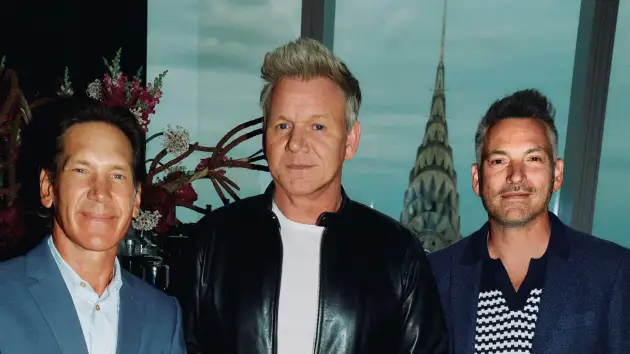CEO spent his savings, 401(k) and paychecks to keep his cookware brand afloat—now it brings in over $170 million a year

HexClad partners Cole Mecray, Gordon Ramsay and Danny Winer.HexClad
Today, it’s celebrity chef Gordon Ramsay’s favorite cookware brand, bringing in millions of dollars annually. But HexClad almost went bankrupt within its first year, nearly taking its co-founders down with it.
But Winer, the CEO, was “very, very confident,” he says. He led the hustle, cashing out 90% of his savings and retirement accounts to pay for advertising and manufacturing. Mecray contributed most of his paychecks from his part-time sales job elsewhere.
They maxed out credit cards, took out a small-business loan from American Express and packaged cookware sets in their backyards. That year, they spent more than $500,000 of their own cash, Winer estimates. A third business partner, whom they later bought out, contributed money too.
“I just hoped we’d get [off the ground] before our money ran out,” says Winer, adding: “I was waking up panicked every night at 4 a.m.”
In November 2017, Winer and Mecray landed an in-store demonstration at Costco. They sold $5,000 worth of pans that day, Winer says: “I went out to my car and I just [wept], because in that moment, everything had been validated.”
The next year, HexClad was profitable, driven largely by Costco sales. It’s grown steadily since, bringing in $170.7 million in revenue last year, according to documents reviewed by CNBC Make It. The company is on track to bring in $350 million this year, HexClad president Jason Panzer says, and Ramsay is now a partial owner.
Here, Winer discusses why he mortgaged his future on a company investors wouldn’t touch, how he knew it was a good bet and how he recognized the “point of no return” signifying that he had to go all in.
CNBC Make It: Why did you decide HexClad was worth gambling your livelihood, so quickly after your first company failed?
Winer: Cole and I started that juicer company nine years ago, before every Whole Foods and New York City street corner had juice bars of their own. At its height in 2015, we brought in somewhere between $5 million and $6 million in revenue.
But sales dropped the next year. One day, I watched a girl put a $7 green drink on two credit cards. It made me realize people didn’t care that it was cheaper to make juice at home. We couldn’t keep up.
HexClad felt different right away. When I showed my friends HexClad pans, I didn’t have to work to sell the product. The response was, “How do we make this into a saucepan? Can we make a wok next?” We knew from listening to consumers that they really only cared about two things: Is the cookware easy to clean and is it durable?
There was no arguing, no “ifs” in the situation.
How did you recognize this particular window of opportunity and prepare yourself to jump through it?
I paid attention to information around me.
In 2017, I was in a doctor’s office reading a business magazine. There was a story inside about how the average Costco customer was 55 years old, and the company was trying to find ways to attract young people. I thought, “Hm, that makes sense.”
About two weeks later, with very little notice, we landed a meeting with Costco. It was essentially a courtesy meeting. The interviewer really wasn’t interested in us, until I said, “We aren’t your grandma’s cookware. Our average customer is in their early 30s, not their late 50s.”
I saw in her face: That connected with her right away.
What would have happened if you’d failed?
I’m a sales guy, so I might have gone and worked for another company. To be honest, though, as soon as I started working on the pan, I knew it wasn’t going to fail. I just wasn’t sure how big it would be. Worst-case scenario, I figured I’d sell $20,000 worth per month and make around $100,000 per year.
But [that first year], I wrestled with a level of doubt. When investors laughed me out of rooms, I was like, “Do they know something I don’t know?”
There was a point of no return, in a way. Ten percent or 50% of my retirement [savings] wasn’t going to be enough [to keep HexClad going]. I’d be working until I was 75 anyway, so I went all in.
I had to look myself in the mirror and recalibrate. I reminded myself people are always hesitant to commit to something new.
That’s why Cole and I didn’t listen to the people who doubted HexClad. We had already learned how to listen to consumers. That was the one thing I knew we were both really good at.
Source: CNBC





